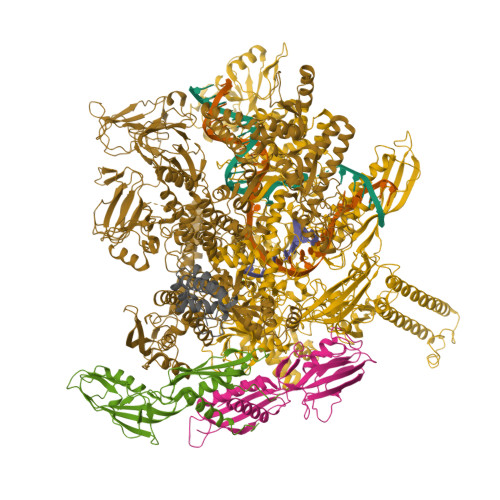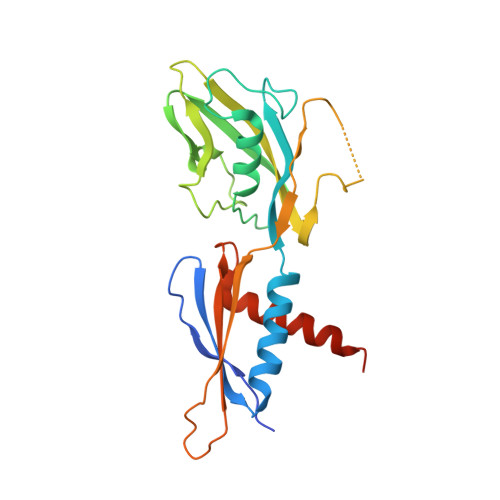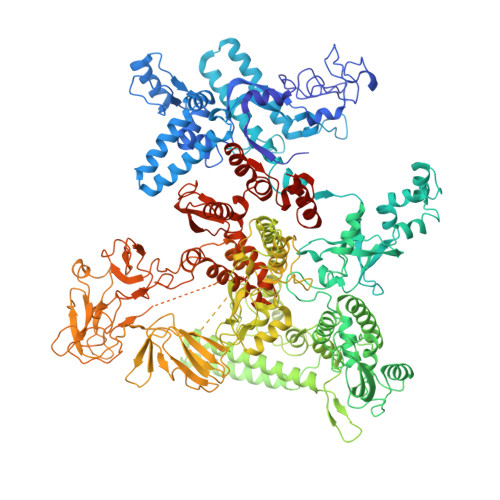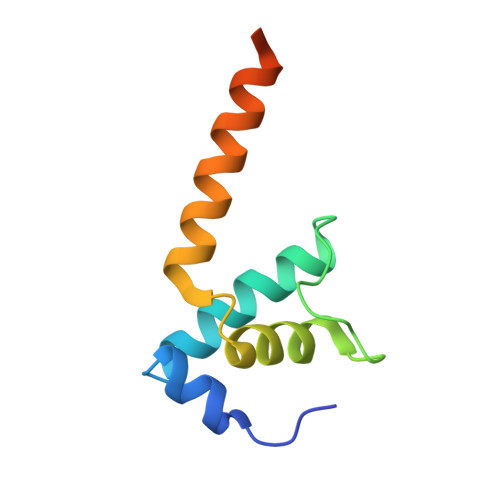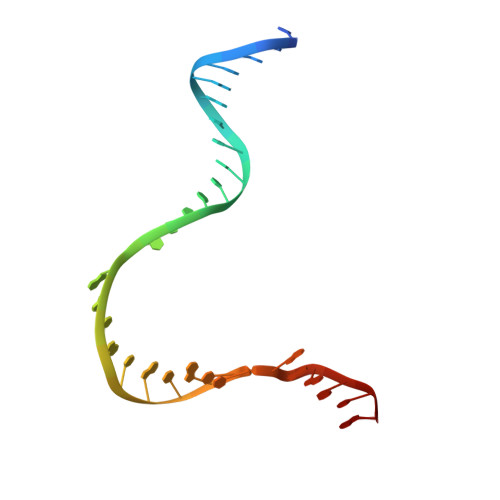An ensemble of interconverting conformations of the elemental paused transcription complex creates regulatory options.
Kang, J.Y., Mishanina, T.V., Bao, Y., Chen, J., Llewellyn, E., Liu, J., Darst, S.A., Landick, R.(2023) Proc Natl Acad Sci U S A 120: e2215945120-e2215945120
- PubMed: 36795753
- DOI: https://doi.org/10.1073/pnas.2215945120
- Primary Citation of Related Structures:
8EG7, 8EG8, 8EGB, 8EH8, 8EH9, 8EHA, 8EHF, 8EHI - PubMed Abstract:
Transcriptional pausing underpins the regulation of cellular RNA synthesis, but its mechanism remains incompletely understood. Sequence-specific interactions of DNA and RNA with the dynamic, multidomain RNA polymerase (RNAP) trigger reversible conformational changes at pause sites that temporarily interrupt the nucleotide addition cycle. These interactions initially rearrange the elongation complex (EC) into an elemental paused EC (ePEC). ePECs can form longer-lived PECs by further rearrangements or interactions of diffusible regulators. For both bacterial and mammalian RNAPs, a half-translocated state in which the next DNA template base fails to load into the active site appears central to the ePEC. Some RNAPs also swivel interconnected modules that may stabilize the ePEC. However, it is unclear whether swiveling and half-translocation are requisite features of a single ePEC state or if multiple ePEC states exist. Here, we use cryo-electron microscopy (cryo-EM) analysis of ePECs with different RNA-DNA sequences combined with biochemical probes of ePEC structure to define an interconverting ensemble of ePEC states. ePECs occupy either pre- or half-translocated states but do not always swivel, indicating that difficulty in forming the posttranslocated state at certain RNA-DNA sequences may be the essence of the ePEC. The existence of multiple ePEC conformations has broad implications for transcriptional regulation.
Organizational Affiliation:
Department of Chemistry, Korea Advanced Institute of Science and Technology, Daejeon 34141, Republic of Korea.








